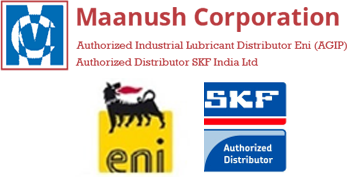Ball Bearings

Deep groove ball bearings
Deep groove ball bearings are particularly versatile. They are simple in design, non-separable, suitable for high and very high speeds and are robust in operation, requiring little maintenance. Because deep groove ball bearings are the most widely used bearing type, they are available from SKF in many designs, variants and sizes.
In addition to the bearings presented in this section, deep groove ball bearings for special applications are shown under Engineered products.

Y-bearings (insert bearings)
Y-bearings, which are usually referred to as insert bearings, are based on sealed deep groove ball bearings in the 62 and 63 series, but have a convex outer ring and in most cases an extended inner ring with a certain locking device enabling quick and easy mounting onto the shaft..

Angular contact ball bearings
Angular contact ball bearings have raceways in the inner and outer rings that are displaced relative to each other in the direction of the bearing axis. This means that they are designed to accommodate combined loads, i.e. simultaneously acting radial and axial loads..
The axial load carrying capacity of angular contact ball bearings increases with increasing contact angle.

Self-aligning ball bearings
Self-aligning ball bearings have two rows of balls and a common sphered raceway in the outer ring. The bearings are insensitive to angular misalignment of the shaft relative to the housing. .
Self-aligning ball bearings generate less friction than any other type of rolling bearing, which enables them to run cooler even at high speeds.

Thrust ball bearings
SKF thrust ball bearings are manufactured as single direction or double direction thrust ball bearings. They are designed to accommodate axial loads only and must not be subjected to any radial load...
SKF thrust ball bearings are separable, i.e. the shaft washer, housing washer(s), ball and cage assembly(s) can be mounted separately.

Angular contact thrust ball bearings
The SKF angular contact thrust ball bearings shown here were originally designed to support the rotary tables of drilling rigs but are also suitable for other applications where high load carrying capacity, high axial stiffness and low friction torque are important. In contrast to conventional thrust ball bearings, angular contact thrust ball bearings can accommodate radial loads in addition to axial loads and are able to operate at high speeds.



